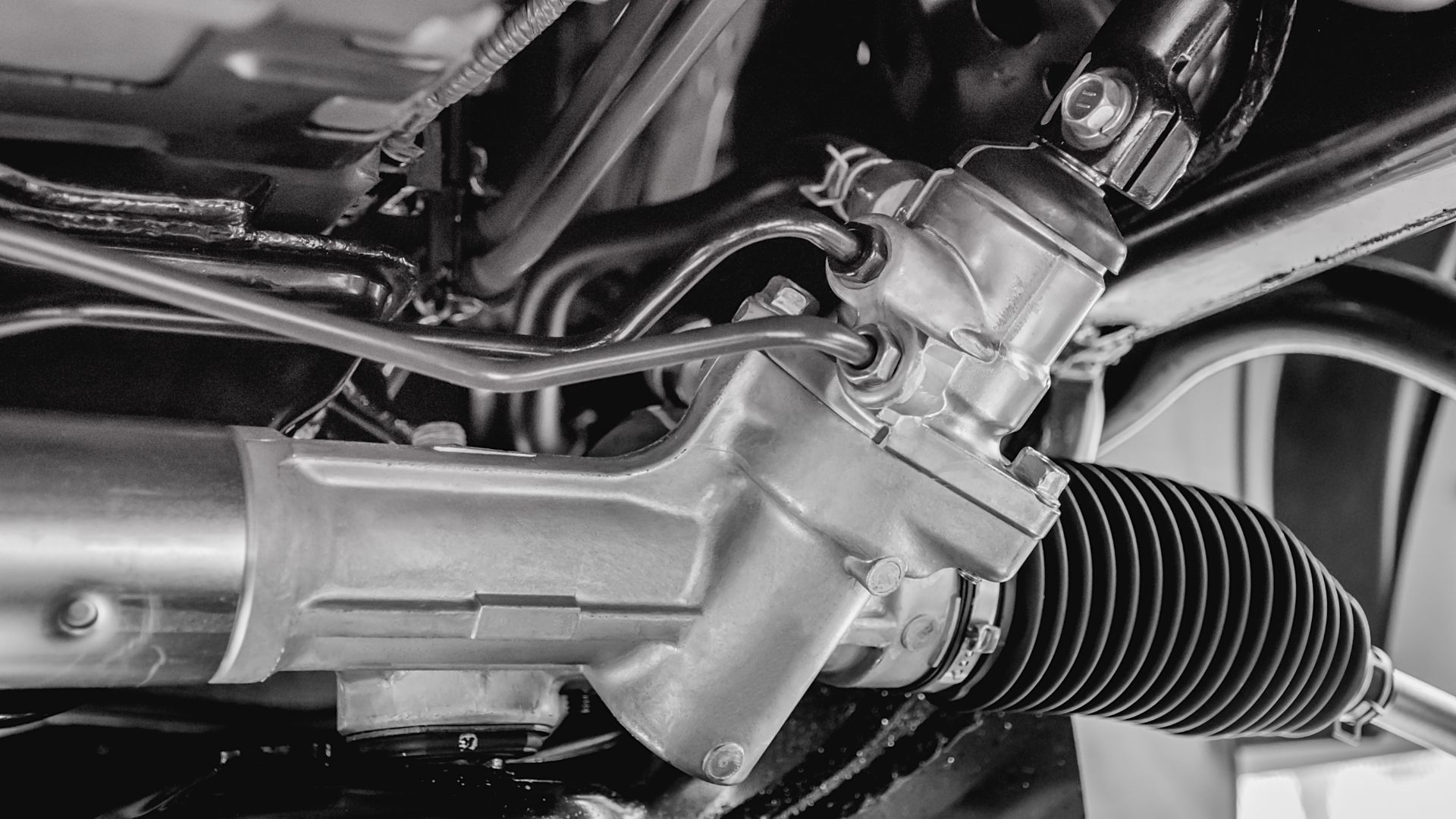Why is it so hard to turn my steering wheel? This question often arises when a car’s steering suddenly feels heavy and sluggish, requiring excessive effort to maneuver. This can be a frustrating and potentially dangerous issue, leaving drivers feeling uncertain and concerned. Understanding the root cause of steering stiffness is crucial for addressing the problem effectively and ensuring a safe driving experience.
Several factors can contribute to a stiff steering wheel, ranging from mechanical malfunctions to environmental influences. We’ll explore these factors, from the intricate workings of power steering systems to the impact of tire pressure and driving habits. By understanding the potential causes, drivers can pinpoint the issue and take appropriate steps to restore smooth and effortless steering.
Mechanical Issues

A stiff steering wheel can be a sign of a mechanical problem with your vehicle’s steering system. The most common culprits are issues with the power steering pump, steering rack, and tie rod ends. These components work together to provide smooth and effortless steering.
Power Steering Pump Failure
The power steering pump is responsible for generating hydraulic pressure that assists in steering. A failing power steering pump can cause a stiff steering wheel, as well as other symptoms.
- Whining Noise: A whining noise coming from the engine compartment, especially when turning the steering wheel, is a common sign of a failing power steering pump. The noise is caused by the pump’s internal components wearing out and creating friction.
- Fluid Leaks: Leaks in the power steering system can lead to a loss of fluid, which can reduce power steering assistance. Look for signs of fluid leaks under the vehicle, especially around the power steering pump and hoses.
- Loss of Power Assistance: A failing power steering pump may result in a gradual loss of power assistance, making it increasingly difficult to turn the steering wheel. You may notice a sudden loss of power assistance if the pump fails completely.
Steering Rack Problems
The steering rack is a component that converts the rotation of the steering wheel into linear motion, which moves the wheels. A faulty steering rack can cause a stiff steering wheel and other steering problems.
- Rack and Pinion Wear: The rack and pinion teeth can wear down over time, leading to a stiff steering wheel. You may also hear a clunking or grinding noise when turning the steering wheel.
- Seals and O-Rings: The seals and O-rings in the steering rack can wear out, allowing fluid to leak. This can lead to a loss of power steering assistance and a stiff steering wheel.
- Bent or Damaged Rack: A bent or damaged steering rack can cause a stiff steering wheel and other steering problems. This can occur due to a collision or other impact.
Tie Rod End Failure
Tie rod ends are the connection points between the steering rack and the steering knuckles, which are attached to the wheels. Damaged or worn tie rod ends can cause a stiff steering wheel and other steering problems.
- Loose or Worn Tie Rod Ends: Loose or worn tie rod ends can cause a stiff steering wheel, as well as a feeling of looseness or play in the steering. You may also hear a clunking or knocking noise when turning the steering wheel.
- Bent or Damaged Tie Rod Ends: Bent or damaged tie rod ends can cause a stiff steering wheel and other steering problems. This can occur due to a collision or other impact.
Fluid Levels and Condition
The power steering system relies on hydraulic fluid to operate. This fluid transmits pressure from the pump to the steering rack, allowing you to effortlessly turn the steering wheel. Maintaining proper fluid levels and ensuring the fluid is clean and free of contaminants is crucial for smooth and responsive steering.
When the fluid level is low or the fluid is contaminated, the power steering system may struggle to function correctly, leading to increased steering wheel resistance. Low fluid levels can cause air bubbles to form in the system, reducing pressure and making it harder to turn the wheel. Contaminated fluid can thicken and clog the system’s components, further hindering its ability to function properly.
Effects of Fluid Levels and Condition on Steering Resistance
Here’s a table summarizing the effects of different fluid levels and conditions on steering resistance:
| Condition | Steering Wheel Resistance | Other Symptoms |
|---|---|---|
| Low Fluid Level | Increased resistance, especially at low speeds or when turning sharply | Whining or groaning noises from the steering system, fluid leaks |
| Contaminated Fluid | Stiff steering, difficulty turning the wheel, jerky movements | Steering wheel feels sluggish or unresponsive, unusual noises from the steering system |
| Normal Fluid Level and Condition | Smooth and effortless steering | No unusual noises or resistance in the steering system |
Tire Pressure and Alignment: Why Is It So Hard To Turn My Steering Wheel

Tire pressure and wheel alignment are crucial factors that significantly impact your steering wheel feel. They can cause steering wheel stiffness, uneven tire wear, and potentially affect your vehicle’s overall handling.
Tire Pressure and Steering Feel
Maintaining the correct tire pressure is vital for optimal steering performance. Under-inflated tires can cause your steering wheel to feel heavy and sluggish, while over-inflated tires can make it feel overly sensitive and difficult to control. Here’s a breakdown of the impact:
- Under-inflation: When tires are under-inflated, the sidewalls bulge outward, leading to increased contact patch with the road surface. This increased contact area creates more resistance, making the steering wheel feel heavier and harder to turn. Under-inflation also contributes to uneven wear, primarily on the outer edges of the tire.
- Over-inflation: Over-inflation, on the other hand, makes the tire more rigid and less compliant. The reduced contact patch with the road surface makes the steering feel more sensitive and twitchy. This can lead to uneven wear on the center of the tire.
Wheel Alignment and Steering Effort, Why is it so hard to turn my steering wheel
Wheel alignment refers to the precise angles of your wheels relative to each other and to the road. Proper alignment ensures that your tires are pointing in the right direction, minimizing steering effort and maximizing tire life. Misalignment can cause several issues, including:
- Uneven Tire Wear: Misaligned wheels cause the tires to wear unevenly. For example, if the wheels are toe-in, the tires will wear more on the outer edges. Conversely, toe-out will result in more wear on the inner edges.
- Steering Wheel Stiffness: Misalignment can create resistance in the steering system, making it feel stiff and difficult to turn. This is because the wheels are constantly fighting against each other, requiring more force to steer.
- Vehicle Pulling: Misaligned wheels can cause your vehicle to pull to one side, requiring constant correction. This is often a result of improper camber or caster angles.
Environmental Factors
The environment can significantly impact the feel of your steering wheel. Extreme temperatures, particularly cold weather, can drastically affect the viscosity of power steering fluid, leading to increased steering effort.
Effects of Temperature on Steering Wheel Feel
The viscosity of power steering fluid, its resistance to flow, is heavily influenced by temperature. As temperatures drop, the fluid thickens, making it harder for the power steering system to assist in turning the wheels. Conversely, in hot weather, the fluid becomes thinner, potentially leading to a less responsive steering feel.
| Temperature | Steering Wheel Feel | Explanation |
|---|---|---|
| Cold | Heavy and difficult to turn | Increased fluid viscosity makes it harder for the pump to circulate the fluid, resulting in more effort needed to turn the wheels. |
| Hot | Light and responsive, potentially loose | Decreased fluid viscosity allows for easier circulation, leading to a lighter steering feel. However, excessive heat can cause the fluid to break down, potentially resulting in a less responsive steering feel. |
| Moderate | Balanced and responsive | The fluid viscosity is optimal, providing the ideal balance between steering effort and responsiveness. |
Driving Habits

Your driving habits, especially those that involve aggressive maneuvers, can have a significant impact on the feel of your steering wheel. The way you handle your vehicle can contribute to increased steering wheel stiffness and even cause wear and tear on your steering system.
Aggressive Driving Habits
Aggressive driving habits, such as hard braking and quick steering maneuvers, can put extra strain on your steering system. This strain can lead to increased steering wheel stiffness.
- Hard Braking: When you brake hard, the weight shifts forward, putting pressure on the front wheels. This can cause the steering wheel to feel heavier and more difficult to turn.
- Quick Steering Maneuvers: Rapid steering movements can also strain the steering system, especially when combined with speed. This can cause the steering wheel to feel stiff and unresponsive.
Driving on Rough Roads
Driving on rough roads or uneven surfaces can cause wear and tear on your steering system, leading to increased steering wheel stiffness.
- Potholes and Bumps: When your car hits a pothole or bump, the impact can travel through the steering system, causing damage to the steering components.
- Uneven Surfaces: Driving on roads with uneven surfaces can also cause wear and tear on your steering system, especially if the road is bumpy or has many cracks.
Using the Steering Wheel as Support
Using the steering wheel as a support while driving, especially when parked, can put unnecessary strain on the steering system.
- Leaning on the Wheel: This can cause the steering column to bend, which can lead to increased steering wheel stiffness and difficulty in steering.
- Parking: When parking, avoid using the steering wheel as a support. This can put stress on the steering system and cause unnecessary wear and tear.
Steering wheel stiffness can be caused by a variety of factors, from mechanical issues to environmental conditions. By understanding these causes and taking appropriate measures, drivers can ensure a safe and enjoyable driving experience. Regular maintenance, proper fluid levels, and responsible driving habits can help prevent steering problems and keep your car in optimal condition. Remember, a smooth and responsive steering wheel is crucial for safe and confident maneuvering on the road.
FAQ Guide
Can low tire pressure make steering difficult?
Yes, low tire pressure can affect steering feel. Underinflated tires can lead to increased rolling resistance, making it harder to turn the steering wheel.
Is it normal for my steering wheel to feel stiff in cold weather?
Yes, power steering fluid can become thicker in cold weather, making the steering feel heavier. This is usually temporary and will improve as the fluid warms up.
How often should I check my power steering fluid?
It’s a good practice to check your power steering fluid level at least once a month. If you notice any leaks or a significant drop in fluid level, consult a mechanic immediately.
Can using the steering wheel as a support while driving cause problems?
Yes, using the steering wheel as a support can put unnecessary strain on the steering system and potentially damage components over time.